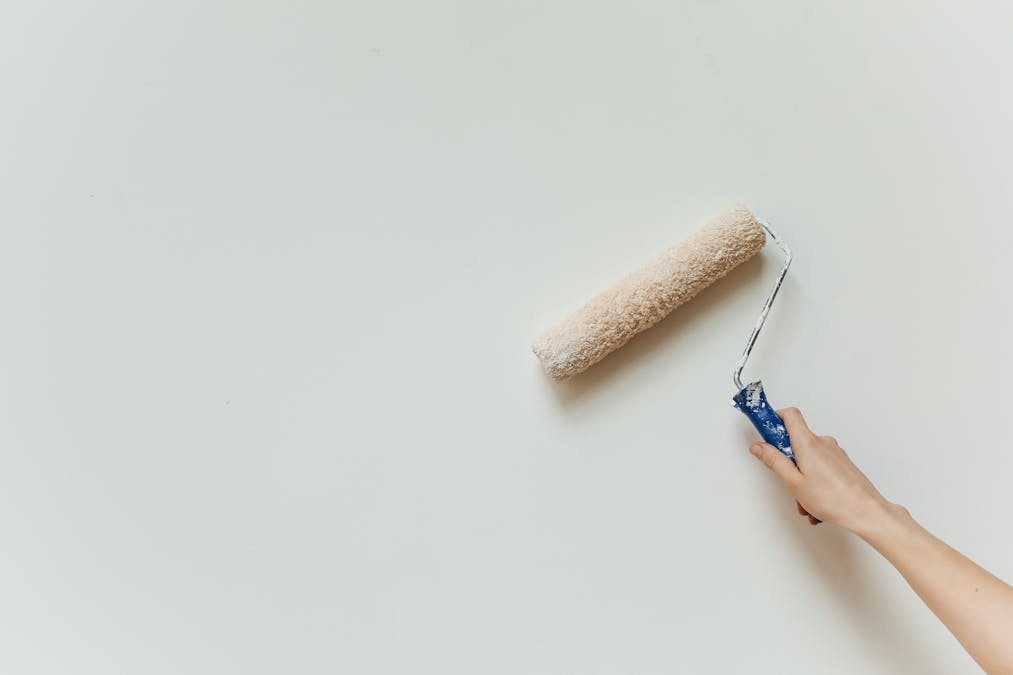
How Often Should You Repaint Your Interior Walls? A Room-by-Room Breakdown
Repainting the inside of your home isn’t just about keeping things looking fresh; it’s about protecting your walls, maintaining your home’s value, and creating a space that feels clean and cared for.
Still, many homeowners aren’t sure how often different rooms need to be repainted. Should you wait until the paint starts peeling? Or is there a general schedule to follow?
In this guide, we’ll break down how often to repaint each area of your home based on how much wear and tear those spaces typically see. Whether you’re living in your forever home or just moved into a new one, keeping up with paint maintenance is one of the easiest ways to protect your investment and enjoy your space.
Living Room & Dining Room: Every 5–7 Years
These are typically the most visible rooms in the house, but surprisingly, they tend to hold up longer than you might expect, especially if they’re not used every day or aren’t full of sticky fingers and flying toys.
However, even in low-traffic homes, sunlight, smoke, dust, and subtle scratches will dull the finish over time. If you host often or have large windows with lots of natural light, you may notice fading a bit sooner.
Tips to extend the life of your living room paint:
- Choose a higher sheen (like eggshell or satin) for durability
- Avoid placing furniture too close to the walls to reduce scuffing
- Use gentle, non-abrasive cleaners for occasional touch-ups
When it’s time for a refresh, a new coat can dramatically brighten the space and elevate your home’s style, without major renovations.
Kitchen & Bathroom: Every 3–4 Years
Kitchens and bathrooms may not be the biggest rooms in your home, but they’re some of the hardest-working, and it shows on the walls. These spaces are constantly exposed to moisture, heat, cooking residue, and frequent cleaning, which can wear down paint faster than in any other room.
In bathrooms, steam from showers and poor ventilation can lead to bubbling or mildew on inadequately protected surfaces. In kitchens, even the most careful cook can’t avoid the occasional splash of sauce or puff of oil. Over time, these subtle impacts can cause paint to peel, discolor, or develop a greasy film that’s tough to remove.
Why repainting these rooms every 3–4 years matters:
- Prevents moisture damage and mildew buildup
- Keeps high-humidity spaces looking clean and well-maintained
- Allows for touch-ups to small areas that may be stained or peeling
To extend longevity, always use a paint with mildew-resistant properties and a washable finish like satin or semi-gloss—especially in areas near sinks, stoves, or tubs.
Bedrooms: Every 5–6 Years (Children’s Rooms: 2–3 Years)
Bedrooms are personal spaces, and while they tend to be lower-traffic than common areas, how often you repaint depends heavily on who’s using the room.
For adult bedrooms, walls generally stay in good shape for 5–6 years. These rooms aren’t exposed to much moisture or frequent contact, making them the most forgiving when it comes to wear. Unless you’re planning a design update or notice fading near windows, there’s little need to repaint more frequently.
Children’s bedrooms, on the other hand, are a different story. Between toys, crayons, sticky hands, and energetic play, walls take a lot of abuse. Add frequent layout changes and shifting tastes as they grow up, and you may find yourself repainting every 2–3 years.
Reasons to repaint kids’ rooms more often:
- Frequent scuffs, stains, or markings from play
- Desire to update the color as their interests change
- Prepping for resale or converting the room for another use
For children’s rooms, we recommend durable, scrubbable finishes like eggshell or satin that can handle occasional cleaning without breaking down.
Hallways & Entryways: Every 2–4 Years
If there’s one area in your home guaranteed to show wear quickly, it’s the hallways and entryways. These zones act like highways—daily traffic, bags brushing the walls, kids running through, pets rubbing past—all add up to noticeable wear in a short amount of time.
Because these spaces are narrow, even small scuff marks and dents are more noticeable. Plus, hallways and foyers often set the tone for the entire home. Fresh paint here gives a great first impression, while worn or dingy walls can detract from even the best-decorated interior.
Common signs it’s time to repaint:
- Discoloration from hands or frequent cleaning
- Chips along door frames or trim
- Scuff marks from shoes, strollers, or backpacks
Repainting every 2–4 years in these areas keeps your home looking sharp and well cared for. If your walls are a lighter shade, you may need to repaint closer to the 2-year mark.
What Can Shorten the Lifespan of Interior Paint?
While the average repainting timeline depends on room type, several factors can cause paint to wear out faster—regardless of the space.
Here are a few common culprits:
- Low-quality paint products: Cheaper paints often lack the durability needed for high-traffic areas or humid environments. Investing in premium materials up front can extend your repaint cycle by years.
- Improper surface prep: If surfaces aren’t cleaned, patched, and primed correctly, even top-quality paint can fail to adhere well or show defects early.
- Inadequate ventilation: Moisture buildup in bathrooms, laundry rooms, or closed-off spaces can lead to bubbling, mildew, or peeling.
- Color selection: Light-colored paints tend to show dirt, scuffs, and fading more quickly than darker tones, especially in busy areas.
- Frequent cleaning: While washable paints are designed to handle occasional scrubbing, aggressive or frequent cleaning can wear down the finish prematurely.
The takeaway? Even if your room falls within the average repainting range, environmental conditions and product choices can shorten (or extend) that timeline. Working with a professional ensures those details are accounted for from the start.
A Fresh Coat Does More Than You Think
Repainting your interior walls isn’t just about refreshing your home’s style—it’s a form of regular upkeep that protects your surfaces and enhances how each room feels and functions.
From high-traffic hallways to moisture-prone bathrooms, each space has its own repainting rhythm. Following these general guidelines helps you stay ahead of wear and keep your home looking polished year-round:
- Living and dining rooms: Every 5–7 years
- Kitchens and bathrooms: Every 3–4 years
- Adult bedrooms: Every 5–6 years
- Children’s bedrooms: Every 2–3 years
- Hallways and entryways: Every 2–4 years
If you’re unsure where your walls stand—or you just want a second opinion—our team at Prep Smart Painting is here to help. With decades of professional experience and a strong focus on prep, finish quality, and client satisfaction, we make interior painting easy and stress-free.
Need a refresh? Get in touch with us today to schedule a consultation or learn more about our interior painting services across Rhode Island and Southeast Massachusetts.






